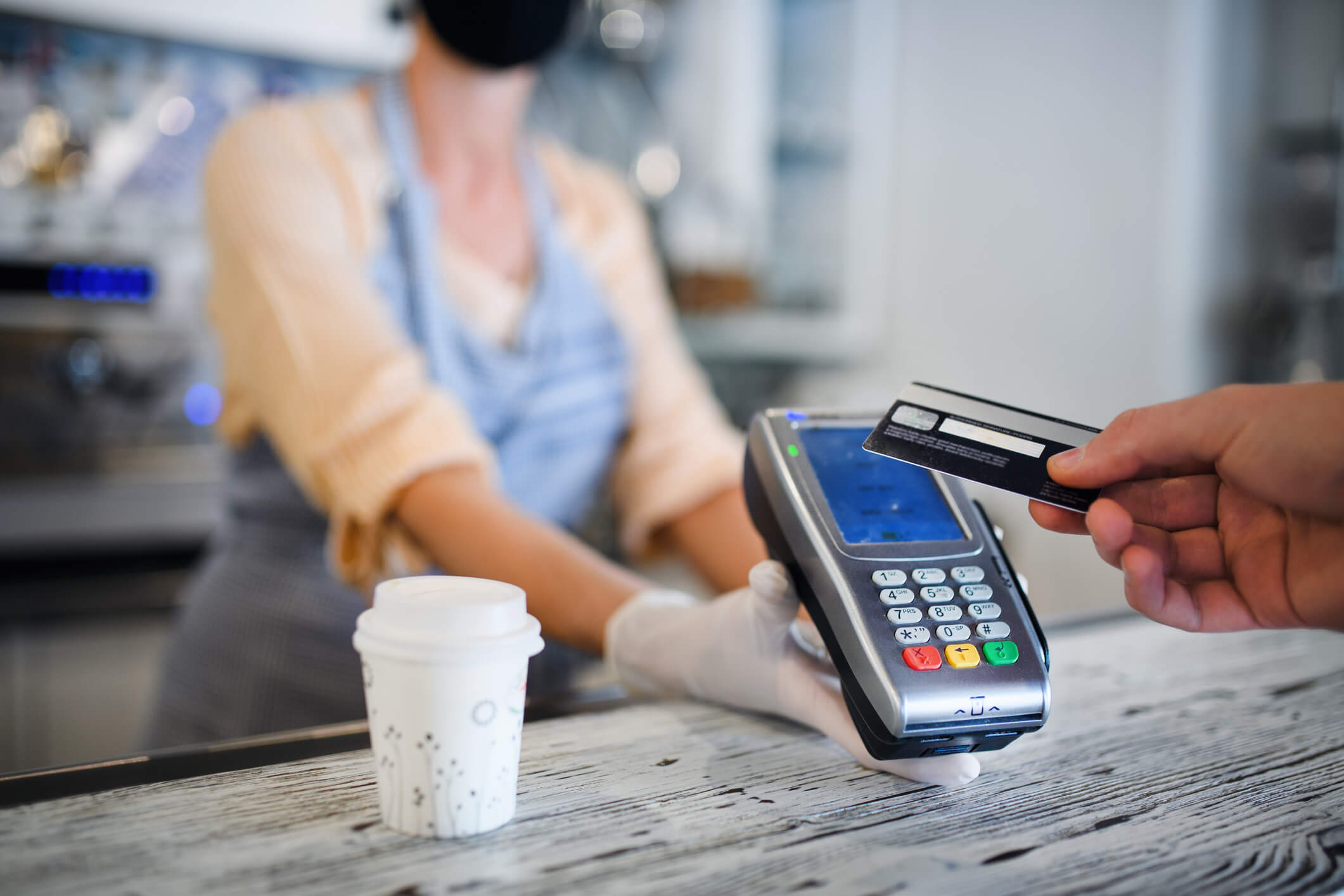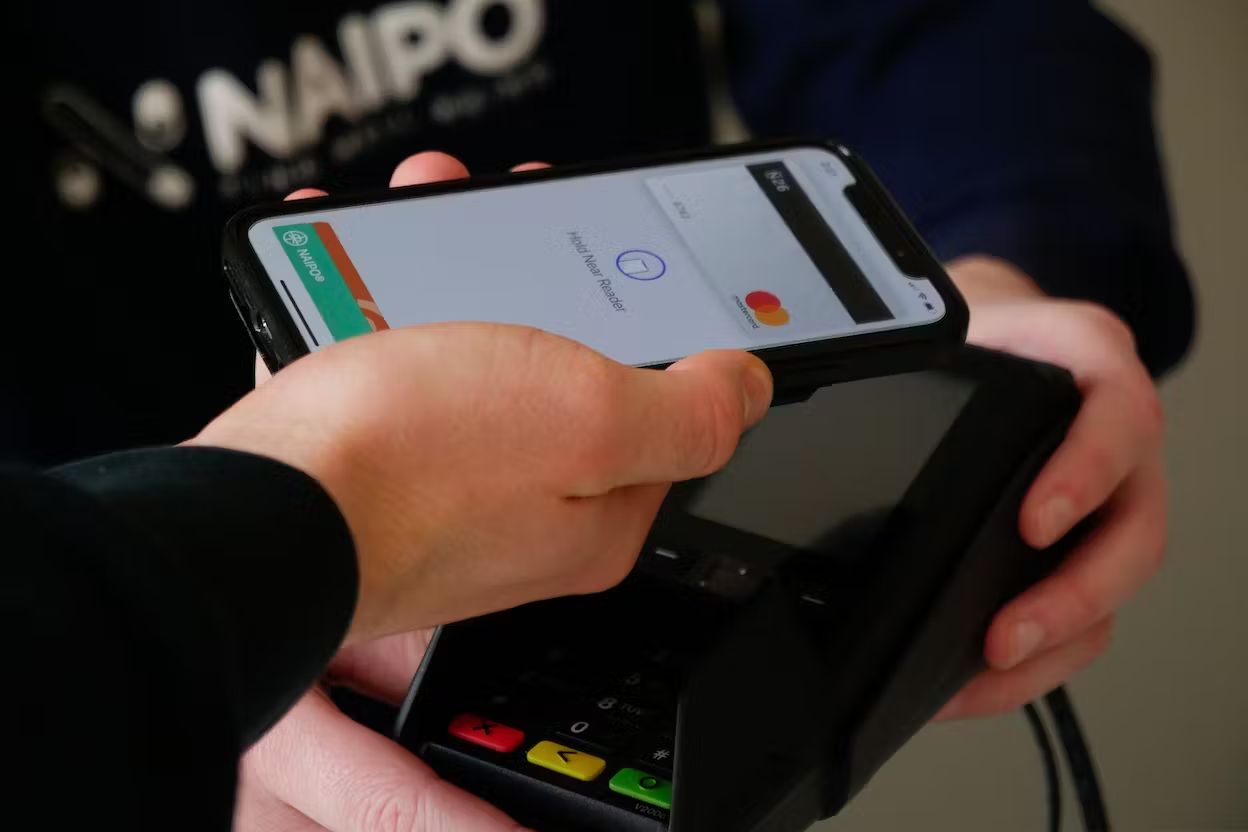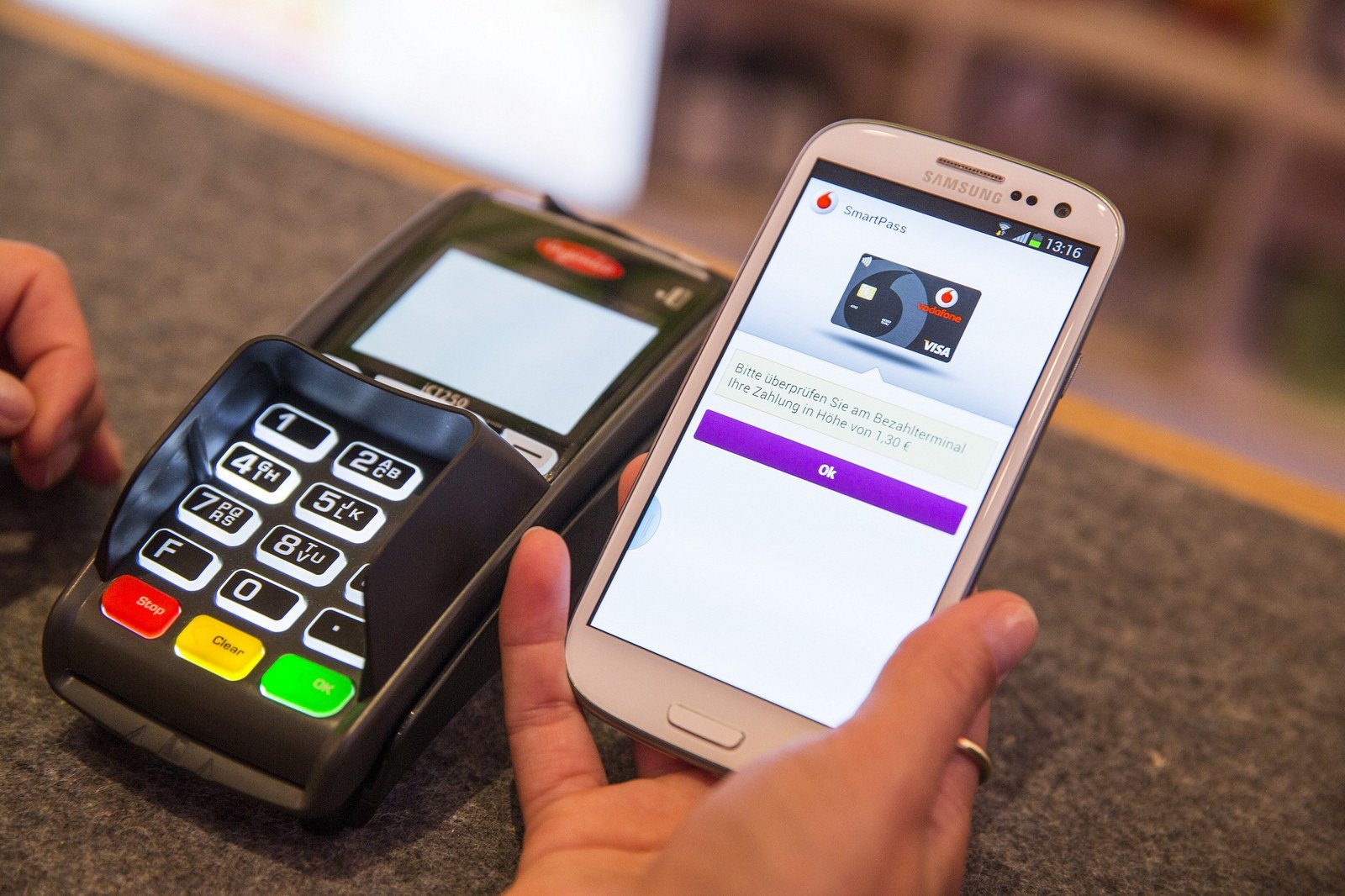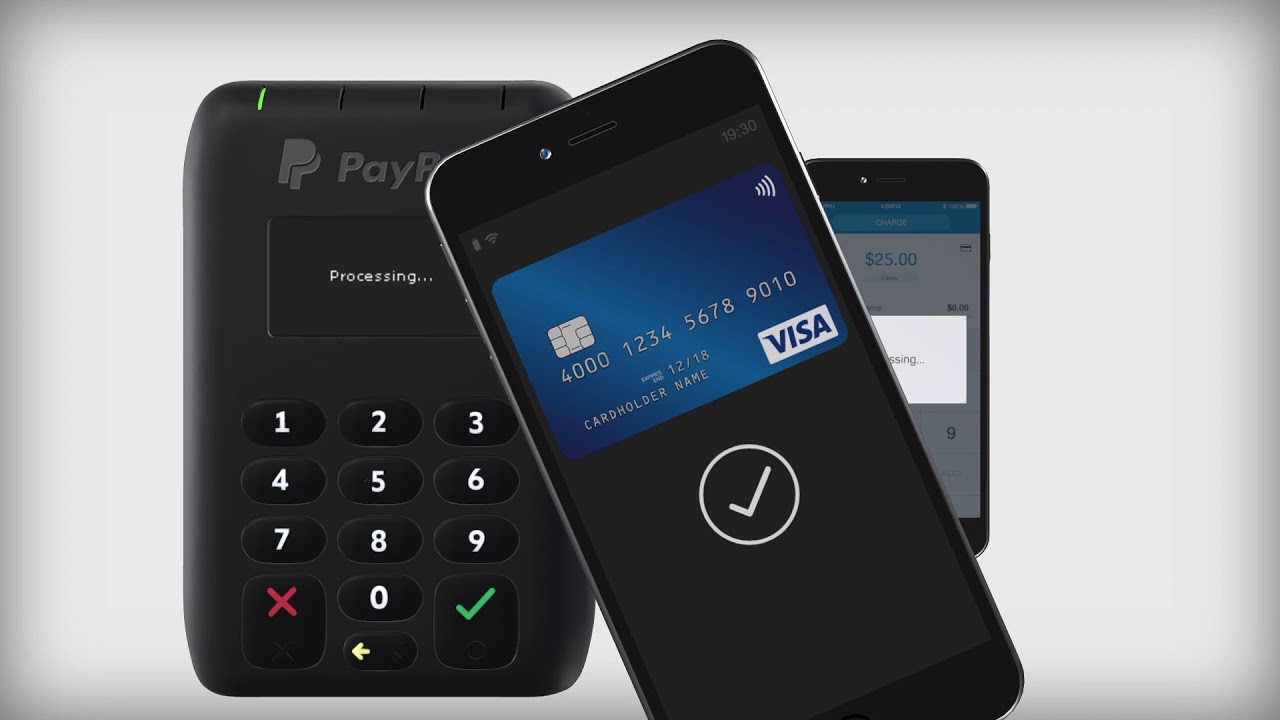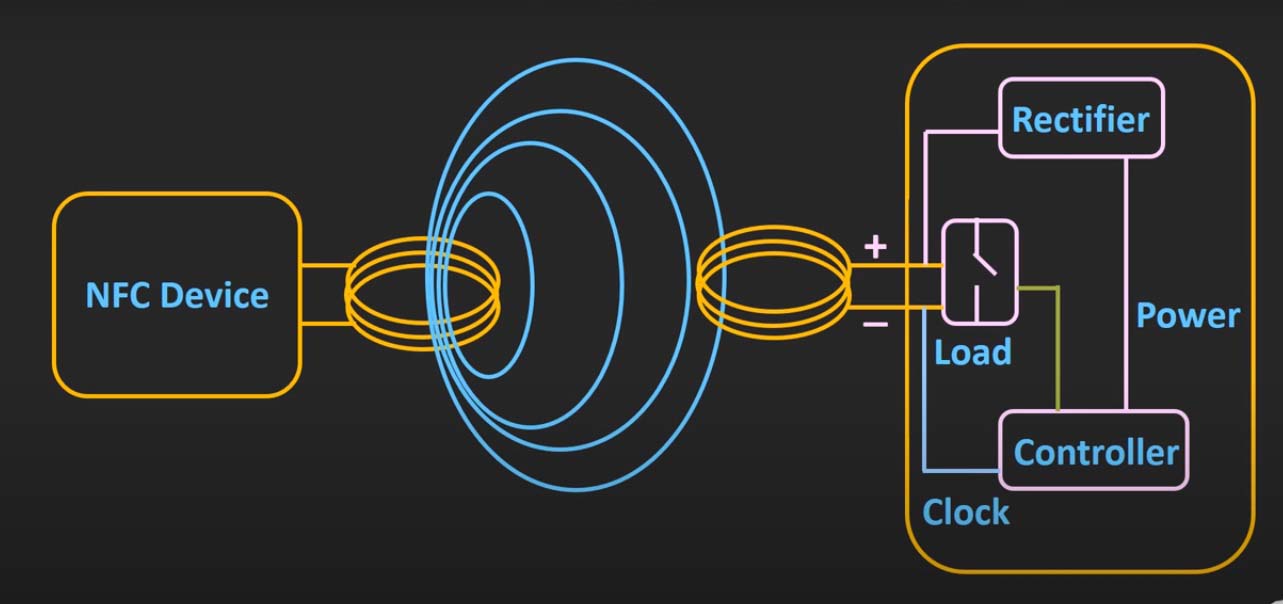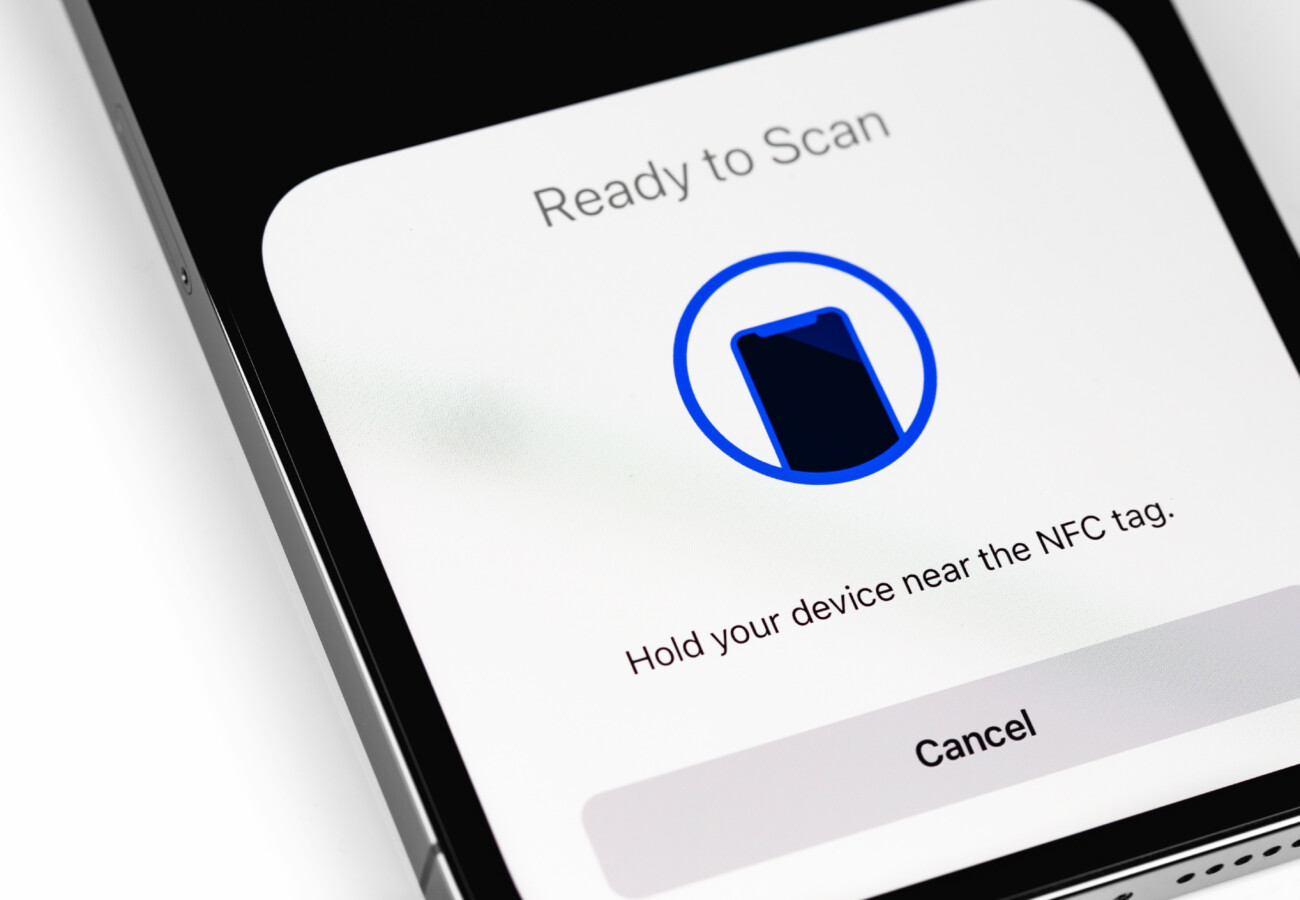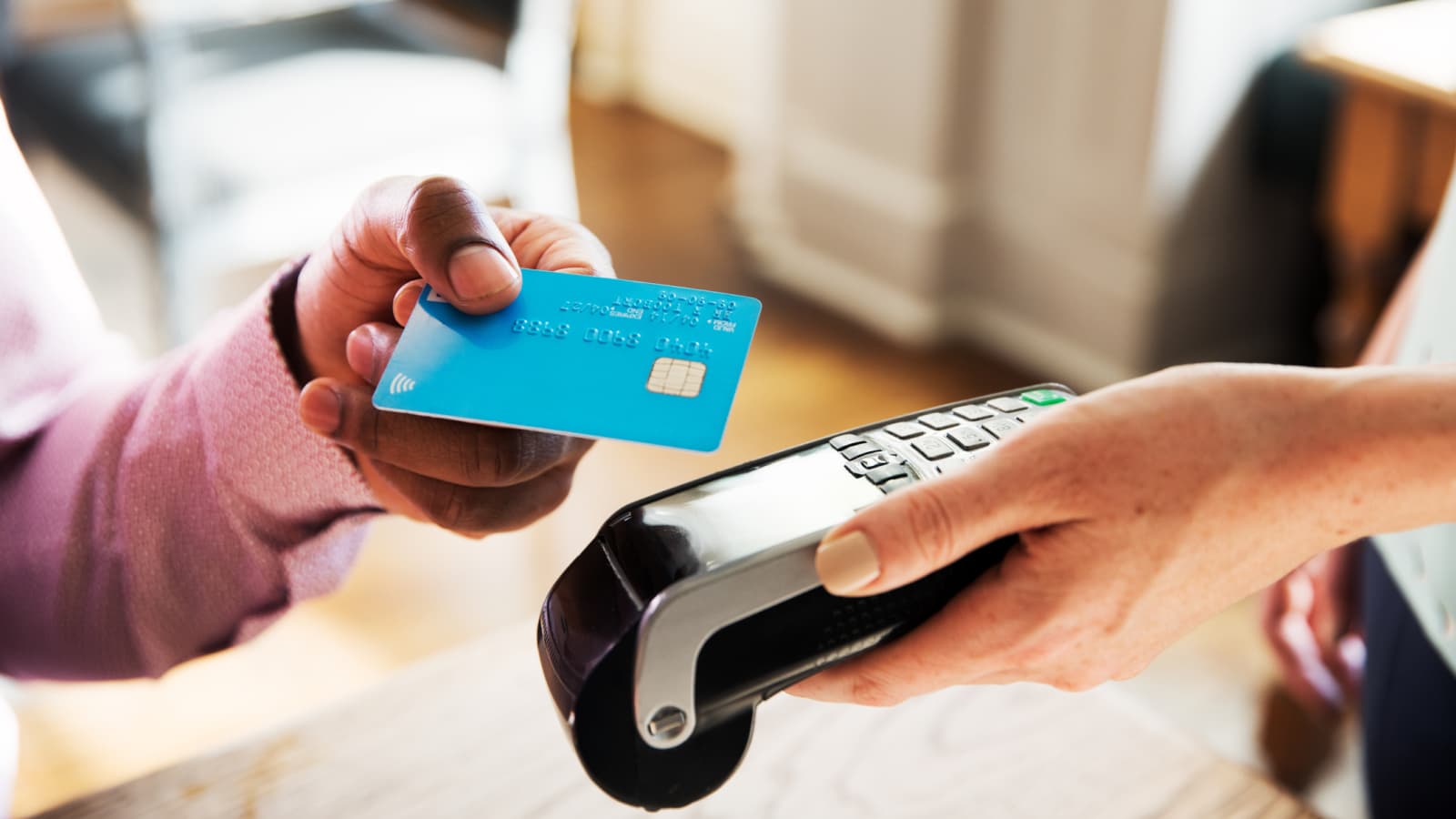Introduction
NFC, short for Near Field Communication, is a wireless communication technology that enables devices to establish connections and share data over short distances. It has gained popularity in recent years, particularly with the rise of contactless payment systems and smart devices.
NFC technology operates on the principle of electromagnetic induction, allowing two devices to communicate when they are in close proximity, usually within a few centimeters. This close range ensures secure and reliable data transfer between devices, making NFC an ideal solution for various applications.
With NFC, users can perform a wide range of actions, such as making payments, accessing public transportation, sharing files, and connecting to smart devices, simply by tapping or bringing their NFC-enabled devices together.
As the world becomes more digitized and interconnected, NFC technology has become a vital part of our everyday lives. From contactless payment cards to smart wearables and mobile devices, NFC offers a convenient, secure, and efficient way to transmit information.
In this article, we will explore the benefits, uses, and security considerations of NFC cards. We will also discuss the differences between NFC cards and other contactless cards, as well as popular applications that utilize NFC technology.
What is NFC?
Near Field Communication (NFC) is a short-range wireless communication technology that allows devices to exchange data when they are in close proximity to each other. NFC is a subset of Radio Frequency Identification (RFID) technology and operates on the principles of electromagnetic induction.
NFC technology has gained significant popularity due to its wide range of applications in various industries. It is commonly used for making contactless payments, transferring data between devices, accessing transportation systems, and more.
NFC utilizes radio waves to establish communication between devices, which can be in the form of smartphones, tablets, or NFC-enabled cards. It operates in the high-frequency (HF) range, typically at frequencies of 13.56 megahertz (MHz).
Unlike other wireless communication technologies like Bluetooth or Wi-Fi, NFC requires the devices to be in close proximity, typically within a few centimeters, for successful data transfer. This close-range requirement ensures a higher level of security since it reduces the risk of unauthorized access or interception.
NFC technology uses two types of devices – the initiator and the target. The initiator device generates an electromagnetic field that powers the NFC chip in the target device, allowing them to communicate and exchange data. This communication can occur in two modes – active and passive.
In active mode, both devices generate their own electromagnetic fields and can send and receive data simultaneously. This mode is widely used for peer-to-peer communication, where two NFC-enabled devices exchange information with each other.
In passive mode, one device acts as the initiator, and the other device acts as the target. The initiator generates the electromagnetic field, while the target devices respond by transmitting their data. Passive mode is commonly used for contactless payment systems, where the card or device with the NFC chip is the target, and the point-of-sale terminal acts as the initiator.
NFC technology offers a seamless and convenient way to establish connections and exchange data between devices. It simplifies various tasks like making payments, sharing contacts, initiating data transfers, and accessing information, making it an integral part of the modern digital landscape.
How does NFC work?
Near Field Communication (NFC) technology operates on the principle of electromagnetic induction and works by establishing a connection between two devices that are in close proximity to each other. The communication is initiated when an electromagnetic field is created by one device, known as the initiator, and detected by the other device, referred to as the target.
There are three main modes of operation in NFC:
- Peer-to-peer mode: In this mode, two active NFC devices can communicate with each other by taking turns in generating the electromagnetic field. Both devices can send and receive data simultaneously, allowing for seamless information exchange.
- Read/Write mode: In this mode, an active NFC device, such as a smartphone, can read or write data to a passive NFC tag. The tag contains information that can be accessed by the device, such as a website URL, contact details, or text-based information.
- Card emulation mode: In this mode, an active NFC device can behave as a passive NFC card or tag. This allows the device to be used for contactless payments or access control, emulating the functionality of traditional smart cards or RFID tags.
The process of establishing an NFC connection involves the following steps:
- Initiation: The initiator device generates an alternating current in its NFC antenna, creating an electromagnetic field. This field contains the necessary power and information to establish communication.
- Activation: When a target device comes within range of the initiator’s electromagnetic field, it recognizes the field and activates its NFC circuitry.
- Data exchange: The initiator and target devices exchange data by modulating the electromagnetic field. This modulation occurs by varying the voltage and current in the field at specific frequencies.
- Termination: Once the data exchange is complete, the devices can terminate the connection by moving out of range or manually disconnecting.
NFC technology operates at a frequency of 13.56 megahertz (MHz) and enables data transfer speeds ranging from 106 kilobits per second (Kbps) to 424 Kbps. The range of NFC communication is typically limited to a few centimeters, ensuring a secure and reliable connection.
NFC is supported by a wide range of devices, including smartphones, tablets, smartwatches, and NFC-enabled cards. It offers a simple and intuitive way to perform various tasks, such as making payments, transferring files, accessing information, and connecting with compatible devices, all with just a tap or touch.
Differences between NFC cards and other contactless cards
NFC cards and other contactless cards, such as RFID and smart cards, share similarities in terms of their wireless communication capabilities. However, there are several key differences between these technologies that set them apart.
1. Communication Range:
NFC cards typically have a shorter communication range compared to other contactless cards. NFC operates within a range of a few centimeters, ensuring close proximity between the devices for communication. This limited range enhances security and prevents unauthorized access. In contrast, RFID cards and some smart cards can operate at longer distances, allowing for communication ranges of several meters.
2. Speed and Data Transfer:
NFC technology offers faster data transfer speeds compared to RFID cards. NFC can achieve speeds ranging from 106 kilobits per second (Kbps) to 424 Kbps, allowing for quick and seamless data exchange. RFID cards, on the other hand, typically have slower data transfer rates, ranging from a few Kbps to tens of Kbps.
3. Device Compatibility:
NFC cards are specifically designed to be compatible with NFC-enabled devices, such as smartphones, tablets, and contactless payment terminals. These cards require an NFC-enabled device to establish a connection and exchange data. In contrast, other contactless cards, like RFID cards and some smart cards, may require specialized readers or terminals for communication.
4. Functionalities and Applications:
NFC cards offer a wide range of functionalities and applications beyond typical contactless payment capabilities. They can be used for various purposes, such as accessing public transportation systems, storing and transferring data, initiating wireless connections, and interacting with smart devices. RFID cards, on the other hand, are primarily used for identification and tracking purposes, such as access control or inventory management.
5. Security Features:
NFC cards provide enhanced security features compared to other contactless cards. The close proximity required for NFC communication adds an extra layer of security, making it more difficult for unauthorized individuals to intercept or tamper with the data exchange. NFC technology also supports encryption and authentication protocols to protect sensitive information. RFID cards and some smart cards may offer security features, but they might not be as robust as those found in NFC cards.
In summary, while NFC cards and other contactless cards share common wireless communication capabilities, there are distinct differences in terms of communication range, data transfer speeds, device compatibility, functionalities, and security features. Understanding these differences can help determine the most suitable technology for specific applications and requirements.
Uses of NFC cards
NFC (Near Field Communication) cards offer a wide range of practical applications across various industries and everyday use. These cards leverage the convenience and security of NFC technology to simplify tasks and enhance user experiences. Here are some common uses of NFC cards:
1. Contactless Payments:
NFC cards are widely used for contactless payments. By simply tapping their NFC card on a compatible payment terminal, users can complete transactions quickly and securely without the need for physical cash or traditional swiping of cards. NFC-enabled cards provide a convenient and efficient way to make payments in stores, restaurants, and other establishments that support contactless payments.
2. Access Control and Identification:
NFC cards are employed for access control systems in offices, residential buildings, and other restricted areas. These cards can be assigned to authorized personnel and used to gain access by tapping them on NFC-enabled readers. Moreover, NFC cards can serve as identification cards that store personal information like names, employee IDs, and access privileges, making them useful in various security applications.
3. Public Transportation:
Many cities and transportation systems use NFC cards as a means of payment for public transportation. Passengers can use their NFC cards to tap and pay for bus, train, or subway fares, eliminating the need for physical tickets or cash. NFC-based transit cards provide a hassle-free and efficient way to travel within a city or region with integrated fare payment systems.
4. Loyalty and Rewards Programs:
NFC cards enable businesses to implement loyalty and rewards programs for their customers. Participants can use their NFC cards to accumulate loyalty points or redeem rewards by simply tapping the card at participating outlets. This streamlined process enhances customer engagement and simplifies the management of loyalty programs for businesses.
5. Information Sharing:
NFC cards allow for easy and quick sharing of information between devices. By tapping an NFC card against an NFC-enabled device, users can share contact details, website URLs, or other predefined information. This feature is commonly used at business networking events or for quickly exchanging information in personal settings.
6. Smart Home Automation:
NFC cards can be used in smart homes to automate various tasks. By programming NFC tags with specific instructions, users can control lighting, temperature, security systems, and other smart home devices. For example, tapping an NFC card on an NFC reader at the home’s entrance can trigger a series of actions like turning on lights and adjusting the thermostat.
7. Ticketing and Events:
NFC cards are utilized for ticketing systems at events, concerts, and sports venues. Instead of traditional paper tickets or e-tickets on smartphones, attendees can opt for NFC cards that store their ticket information. These cards can be easily scanned or tapped on NFC readers to gain entry to events, ensuring efficient and secure ticket management.
These are just a few examples of the diverse applications for NFC cards. As NFC technology continues to evolve, we can expect it to find even more innovative uses in industries like healthcare, gaming, advertising, and more.
Advantages of NFC cards
NFC (Near Field Communication) cards offer numerous advantages that make them a preferred choice for various applications. These advantages arise from the unique characteristics and capabilities of NFC technology. Here are some key advantages of NFC cards:
1. Convenience and Ease of Use:
NFC cards provide a seamless and effortless way to perform tasks. With a simple tap or touch, users can initiate actions such as making payments, accessing secure areas, or sharing information. The intuitive nature of NFC technology enhances user experience and eliminates the need for complex procedures or physical interactions.
2. Faster Transactions:
NFC-enabled cards enable quick and efficient transactions. With a single tap, users can complete contactless payments in a matter of seconds, reducing the waiting time at checkout counters. NFC technology’s fast data transfer speeds contribute to faster and more efficient transactions compared to traditional card swiping or cash transactions.
3. Enhanced Security:
NFC cards offer enhanced security features to protect user data and prevent unauthorized access. The close proximity required for NFC communication minimizes the risk of interception or data theft. Additionally, NFC technology supports encryption and authentication protocols, making it difficult for malicious actors to compromise the integrity of the communication.
4. Versatility and Compatibility:
NFC cards are compatible with a wide range of devices that support NFC technology, including smartphones, tablets, and contactless payment terminals. This compatibility ensures that the cards can be used with various systems and platforms, making them versatile for different applications.
5. Seamless Integration with Everyday Life:
NFC technology seamlessly integrates into everyday life. By incorporating NFC cards into existing systems and processes, users can easily adapt to contactless payments, access control systems, public transportation, and more. The familiarity and ease of use contribute to the widespread adoption of NFC cards in various industries.
6. Efficient Data Exchange:
NFC cards provide a reliable and efficient means of exchanging data between devices. Whether it is transferring contacts between smartphones, sharing information at networking events, or updating access privileges in access control systems, NFC technology ensures smooth and accurate data transfer without reliance on internet connectivity.
7. Cost-Effective Solution:
Implementing NFC technology through cards is a cost-effective solution compared to other wireless communication technologies like Bluetooth or Wi-Fi. NFC-enabled cards can be manufactured at a lower cost, making them more accessible for businesses and consumers alike.
8. Eco-Friendly Alternative:
NFC cards contribute to environmental sustainability by reducing the need for physical resources, such as paper tickets or plastic access cards. By using NFC technology, businesses can minimize their carbon footprint and contribute to a greener future.
In summary, NFC cards offer numerous advantages, including convenience, speed, security, compatibility, integration, efficient data exchange, cost-effectiveness, and eco-friendliness. These advantages have made NFC cards a popular choice for a wide range of applications, from contactless payments to access control systems and beyond.
Disadvantages of NFC cards
While NFC (Near Field Communication) cards offer numerous advantages, there are also a few disadvantages associated with this technology. Understanding these limitations is important to fully assess the suitability of NFC cards for specific use cases. Here are some key disadvantages of NFC cards:
1. Limited Range:
NFC communication is limited to a short range of a few centimeters. This limited range can be a disadvantage in scenarios where a longer communication distance is required, such as accessing devices or transferring data from a distance. Other wireless communication technologies like Bluetooth or Wi-Fi offer significantly larger ranges in comparison.
2. Device Compatibility:
Although NFC technology is widely supported, not all devices are equipped with NFC capabilities. Users may encounter compatibility issues if they possess a device that lacks NFC functionality, making it impossible to tap or interact with NFC cards. This limitation can restrict the usability and adoption of NFC cards in specific situations.
3. Power Dependency:
While NFC cards do not require their own power source, they rely on the power generated by the initiating device’s electromagnetic field for operation. This dependency on an external power source means that NFC cards cannot function independently or perform actions without the presence of an active initiator, such as an NFC-enabled smartphone or reader.
4. Limited Data Transfer Speed:
NFC technology offers relatively slower data transfer speeds compared to other wireless communication technologies. While NFC can transfer data at speeds ranging from 106 kilobits per second (Kbps) to 424 Kbps, it may not be as efficient for large file transfers or data-intensive applications. Other technologies like Wi-Fi or Ethernet provide significantly faster transfer rates in comparison.
5. Susceptibility to Interference:
NFC communication can be susceptible to interference from external sources. Environmental factors, such as the presence of metallic objects or electromagnetic interference, can disrupt the NFC signal and impede communication between devices. These interference issues can result in communication failures or interruptions in the transfer of data.
6. Security Concerns:
Although NFC technology includes security features, there is still a risk of potential vulnerabilities. The close proximity required for NFC communication mitigates the risk of unauthorized access, but precautions should be taken to prevent data breaches or eavesdropping when using NFC cards for sensitive transactions or personal information sharing. Implementing strong encryption and authentication protocols is crucial to enhance the security of NFC-enabled systems.
7. Initial Implementation Costs:
Implementing NFC technology and infrastructure can involve initial setup costs for businesses or organizations. This includes acquiring NFC-enabled devices, upgrading systems to support NFC functionality, and training personnel. For smaller businesses or organizations with limited budgets, these costs may pose a challenge for adopting NFC technology.
While these disadvantages exist, they should be considered alongside the advantages of NFC cards when evaluating their overall suitability for specific applications. Implementing appropriate security measures, ensuring device compatibility, and addressing potential drawbacks can help mitigate these limitations and maximize the benefits of NFC technology.
Security Considerations with NFC Cards
While NFC (Near Field Communication) cards offer convenience and versatility, it is important to address the security considerations associated with their use. Understanding these considerations helps in implementing appropriate measures to safeguard the integrity and confidentiality of sensitive data. Here are some key security considerations when using NFC cards:
1. Data Encryption:
Implementing strong encryption is vital to protect the data transmitted between NFC cards and devices. Encryption protocols, such as Advanced Encryption Standard (AES), ensure that sensitive information remains confidential and cannot be easily intercepted or deciphered by unauthorized individuals. Employing robust encryption algorithms helps protect against data breaches and unauthorized access to cardholder information.
2. Authentication Mechanisms:
Proper authentication mechanisms are necessary to ensure that only authorized individuals can access or interact with NFC cards. Implementing secure authentication methods, such as passwords, PINs, or biometric authentication, helps prevent unauthorized use of the cards. Additionally, two-factor authentication adds an extra layer of security by requiring a second form of verification, such as a fingerprint scan, in addition to the NFC card.
3. Tamper-Proof Design:
NFC cards should be designed to resist tampering or physical manipulation. Using materials and techniques that make the cards resistant to physical wear and tear, and employing techniques such as holograms or special inks, can help prevent counterfeit cards and unauthorized cloning attempts. A tamper-proof design ensures the integrity and authenticity of the NFC cards.
4. Secure Storage of Cardholder Data:
Any sensitive cardholder data stored on the NFC card, such as personal information or payment details, should be securely stored using encryption and secure data storage methods. This prevents unauthorized access to the data if the card is lost or stolen. Adhering to data security best practices and complying with industry standards, such as the Payment Card Industry Data Security Standard (PCI DSS), helps ensure the protection of cardholder data.
5. Protection against Relay Attacks:
NFC technology is vulnerable to relay attacks, where unauthorized individuals intercept and relay the communication between an NFC card and a reader. Implementing countermeasures, such as cryptographic distance bounding or session tokens, helps mitigate the risk of relay attacks. These measures ensure that the NFC card communicates only with the intended reader and prevents unauthorized interception or manipulation of the communication.
6. Regular Firmware Updates:
Keeping the firmware of NFC-enabled devices, such as smartphones or card readers, up to date is essential for maintaining security. Firmware updates often include security patches or bug fixes that address known vulnerabilities or weaknesses. Regularly updating the firmware of NFC devices helps protect against emerging threats and ensures the integrity of the security measures in place.
7. User Education and Awareness:
User education plays a crucial role in maintaining the security of NFC cards. Educating users on best practices, such as not sharing their cards, using strong PINs or passwords, and being cautious when tapping or interacting with NFC devices, helps prevent social engineering attacks and unauthorized use of NFC cards. Increased user awareness promotes responsible use and enhances overall security.
By addressing these security considerations, implementing robust security measures, and ensuring compliance with relevant regulations, the use of NFC cards can be made more secure and reliable. Integrating security into the design and operation of NFC-enabled systems helps protect sensitive data and ensures a trustworthy user experience.
Popular NFC Card Applications
NFC (Near Field Communication) cards find application in a wide range of industries, offering convenience, efficiency, and enhanced user experiences. Here are some popular applications where NFC cards are commonly utilized:
1. Contactless Payments:
Contactless payments are one of the most common applications of NFC cards. NFC-enabled payment cards allow users to make secure and convenient transactions by simply tapping their cards on payment terminals. This technology has revolutionized the way we make payments, providing a fast and seamless experience at stores, restaurants, and other establishments.
2. Access Control Systems:
NFC cards are extensively used in access control systems for buildings, offices, and restricted areas. By assigning NFC cards to individuals, organizations can ensure secure entry through electronic locks or turnstiles. NFC cards simplify the process of granting or revoking access privileges, offering a reliable and efficient solution for access control.
3. Public Transportation:
NFC cards are integrated into public transportation systems, offering a convenient fare payment solution. Users can simply tap their NFC cards on card readers in buses, trains, or subway stations to pay for fares. This eliminates the need for physical tickets or cash, making commuting in cities more efficient and hassle-free.
4. Loyalty and Rewards programs:
NFC cards are utilized in loyalty and rewards programs to enhance customer engagement. Users can store their loyalty program details on NFC cards, allowing them to earn points or redeem rewards by tapping their cards at participating stores or loyalty kiosks. This creates a seamless and personalized experience for customers while simplifying the management of loyalty programs for businesses.
5. Event Ticketing:
NFC cards are increasingly used for event ticketing, providing a secure and convenient method of access. Attendees can store their ticket information on NFC-enabled cards, eliminating the need for paper tickets or e-tickets. The cards are easily scanned or tapped on NFC readers at event entrances, ensuring a smooth and efficient entry process.
6. Smart Homes and IoT Integration:
NFC cards play a role in home automation systems and Internet of Things (IoT) integration. Users can program NFC cards with instructions to control various smart devices or settings at home. For example, by tapping an NFC card on an NFC reader, users can enable specific lighting scenes, adjust thermostat settings, or activate security systems.
7. Identification and Security Badges:
NFC cards are used as identification or security badges in numerous industries. These cards can store personal information, access credentials, or permissions, allowing individuals to gain entry to secured areas. NFC-based identification cards provide an efficient and tamper-proof solution for verifying identities and ensuring secure access control.
8. Healthcare Applications:
In the healthcare industry, NFC cards are used for patient identification, medication management, and tracking medical records. NFC-enabled cards can store patient information and allow for secure identification during hospital visits or treatments. These cards streamline administrative processes, reduce errors, and enhance patient safety and privacy.
9. Interactive Marketing and Advertising:
NFC cards are utilized in interactive marketing and advertising campaigns. NFC-enabled cards can be distributed to customers, allowing them to tap the cards on NFC-enabled posters, displays, or stands to access exclusive content, special offers, or product information. This interactive approach enhances customer engagement and provides a personalized experience.
10. Data Transfer and Information Sharing:
NFC cards facilitate easy and quick data transfer between devices. By tapping an NFC card against an NFC-enabled device, users can share contact details, URLs, or predefined information. NFC cards simplify information sharing at events, conferences, or networking sessions, ensuring seamless and efficient data exchange.
These are just a few examples of the popular applications of NFC cards. As NFC technology continues to evolve, more innovative and user-centric applications are expected to emerge in various sectors, bringing further convenience and efficiency to our daily lives.
Conclusion
NFC (Near Field Communication) cards have become an integral part of our modern digital landscape, offering convenience, efficiency, and enhanced user experiences. With their ability to establish seamless connections and enable various applications, NFC cards have gained popularity in industries such as payment systems, access control, transportation, loyalty programs, and more.
NFC technology operates on the principles of electromagnetic induction, allowing devices to communicate when they are in close proximity. This close-range requirement ensures secure and reliable data transfer, making NFC cards suitable for applications that require privacy and authentication.
The advantages of NFC cards, such as convenience, fast transactions, compatibility, and versatility, have made them a preferred choice for contactless payments, access control systems, public transportation, loyalty programs, and smart home automation.
However, it is essential to consider the security considerations related to NFC cards. Implementing strong encryption, secure authentication mechanisms, tamper-proof designs, and regular firmware updates are necessary to protect sensitive data and ensure the integrity of NFC-enabled systems.
Despite some limitations like limited range, device compatibility, and potential security vulnerabilities, NFC cards continue to evolve as a reliable and efficient technology. Increased user education and awareness play a vital role in promoting responsible use and maximizing the security features associated with NFC cards.
In conclusion, NFC cards offer numerous benefits and have found a wide range of applications in various industries. As technology continues to advance, NFC cards will continue to play an essential role in simplifying tasks, enhancing security, and providing seamless experiences for users worldwide.









